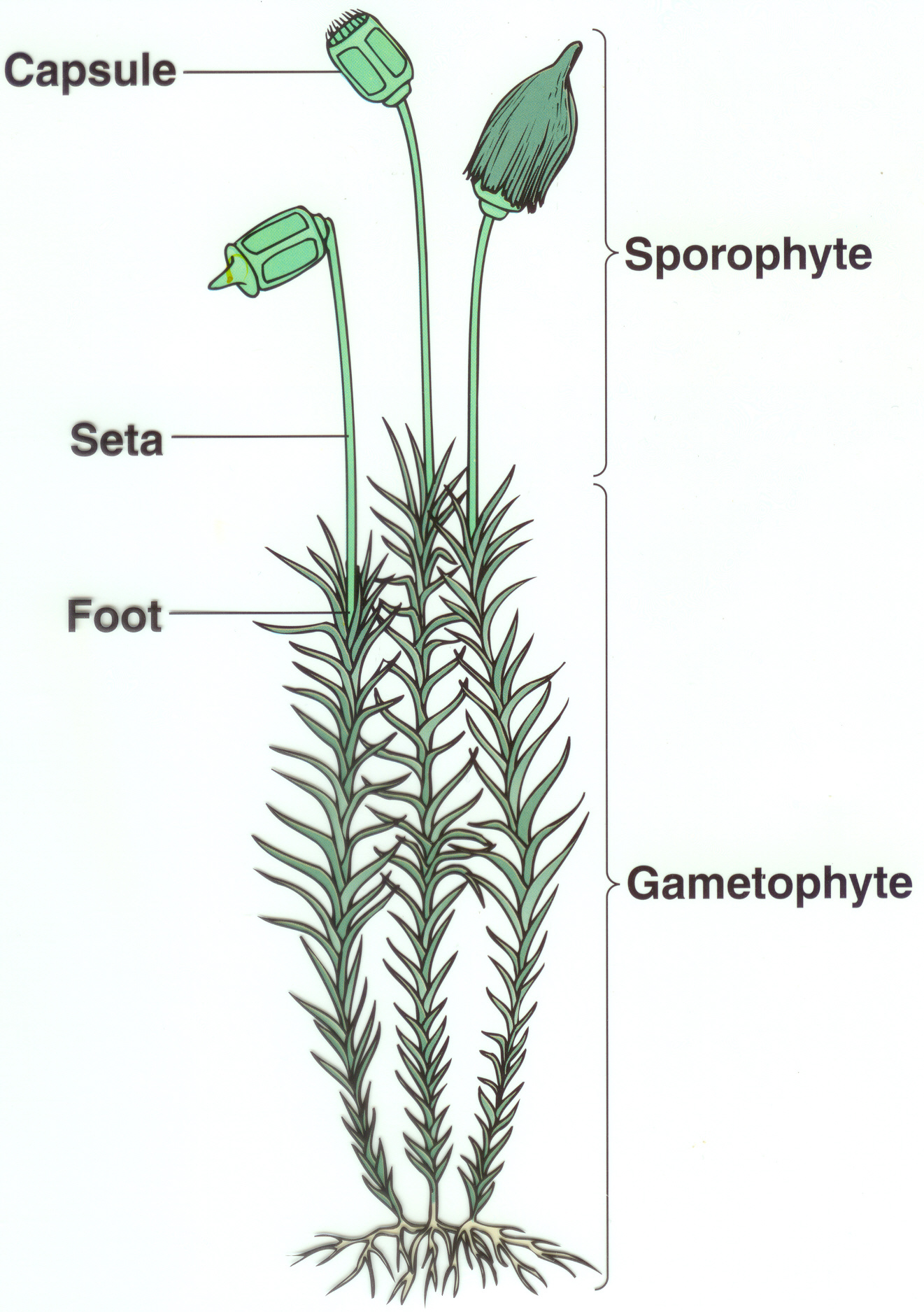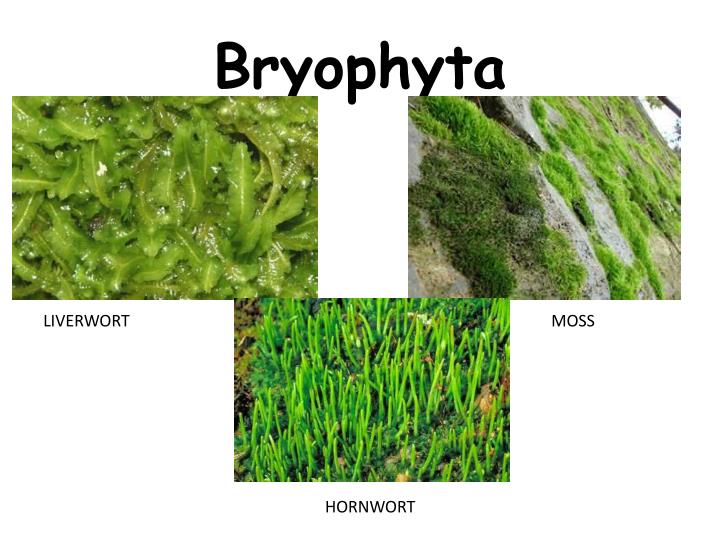Nonvascular Plants Study Guide
Introduction
Nonvascular plants are non-flowering plants that do not have specialized tissues like vascular tissues to transport water and minerals to the rest of the plant body. They are low-growing forms of plants that are found growing in moist habitats. Examples of nonvascular plants include mosses or Bryophytes, liverworts or Hepaticophyta, and hornworts or Anthocerophyta.
Is moss a nonvascular plant?Yes, mosses belong to the group of nonvascular plants called Bryophytes. They are autotrophs and produce their food by photosynthesis. They grow on rocks, sand dunes, glaciers, mountains, etc., and look like green carpets.
Are algae vascular or nonvascular? Algae are photosynthetic nonvascular plants as they lack roots, stems, and leaves. Not all algae are considered nonvascular, but only those belonging to the Viridiplantae clade.
Characteristics of Nonvascular Plants

These plants were the first to evolve. They lack signs of development in structure such as stems, leaves, flowers, and other vascular tissues, indicating that they came before vascular plants.
- Nonvascular plants lack differentiated tissues like vascular tissues, which separate them from vascular plants that have vascular tissues to transport nutrients and water.
- They also lack stems, roots, and leaves. But they have stem-like, root-like, and leaf-like structures that work just like stem, roots, and leaves.
- They do not grow tall and are low-lying plants, so they do not need vascular tissues.
- They use cytoplasmic streaming, diffusion, or osmosis to transport metabolites and other nutrients between their cells.
- There is an alternation of sexual and asexual phases in the nonvascular plants.
- Gametes like sperms with two flagella are produced during the sexual phase. The asexual phase is characterized by the production of sporophytes which form as long stalks having caps on the ends and contain spores.
- Photosynthesis takes place in the gametophyte phase of these nonvascular plants, during which they appear as green moss-like vegetation.
Types of Nonvascular Plants

- Mosses are the most common nonvascular plants and are found as small, green, carpet-like plants.
- More than 17,000 species grow in moist areas and are even found in the tropical and arctic tundra parts of the world.
- Absorption is the method used by the mosses to obtain water and minerals from their surroundings.
- Multicellular filaments called “Rhizoids” help them stay firmly attached to the surface on which they grow. They have a “thallus” in which photosynthesis occurs for their nutrition.
- Stomata are present in mosses, through which they take in the carbon dioxide needed for photosynthesis.
- Growth takes place by the presence of structures called sporophytes which produce and release spores.
- The spores develop into gametophores through which they reproduce sexually by the production of sperms and eggs.
- They also reproduce asexually by fragmentation and developing Gemmae, which are present within cup-like structures.
- Liverworts belong to the Marchantiophyta as their thallus looks like liver lobes.
- There are two types, leafy liverworts, which resemble the mosses and have leaf-like structures, and Thallose liverworts, which grow as flat, ribbon-shaped forms.
- Liverworts are mostly found in tropical dim, moist regions. Their reproduction is by sexual forms like the male antheridia and female archegonia, which produce sperms and eggs, respectively.
- Archegoniophores are umbrella-shaped structures that contain archegonia. The fertilized egg grows into a sporophyte through which they reproduce alternatingly by asexual means.
- Hornworts are bryophytes belonging to the Anthocerophyta whose thallus contains cylindrical structures which resemble horns emerging from it.
- They are mostly found in shaded tropical environments and grow in aquatic areas.
- They contain only one chloroplast within their cells, unlike the mosses and liverworts with many chloroplasts. They also have unicellular rhizoids.
- Reproduction is by sexual means through the gametophyte phase and by asexual means through the sporophyte phase.
Conclusion
- Nonvascular plants prevent soil erosion, produce oxygen, recycle carbon dioxide and provide ecological niches to many animals. Humans use the Sphagnum moss for fuel, as a fire extinguisher, as an addition for sandy soil maintenance, etc.
- They are an important part of the ecosystem as autotrophic, the producers.
- Based on their simple structure, lack of specialized vascular tissues, stems, roots, and leaves, they were the first plant ancestors, and the vascular plants are said to have evolved from them.
FAQs:
1. What is one example of a nonvascular plant?
Moss is one example of a nonvascular plant.
2. What are the characteristics of nonvascular plants?
Nonvascular plants survive only in moist habitats. They do not have leaves, roots, or stems, they are low-growing plants, and they reproduce by forming spores.
3. Is fern a nonvascular plant?
No, a fern is a vascular plant.
4. What are nonvascular plants called?
Non-vascular plants are called Bryophytes.
5. What are the differences between vascular and nonvascular plants?
Vascular plants possess vascular tissues to carry water and minerals throughout the plant’s body, while nonvascular plants do not have vascular tissue. Vascular plants are found on land, but nonvascular plants live in moist habitats only. Vascular plants have stems, roots, and leaves, but nonvascular plants do not have them.
6. Do nonvascular plants have pollen?
No, they do not have pollen.
7. Why are nonvascular plants important?
Nonvascular plants produce oxygen by photosynthesis and decrease the atmosphere’s carbon dioxide content. They provide microhabitats to many animals and are the producers in food chains.
8. What are the main features of vascular and nonvascular plants?
Vascular plants have leaves, roots, and stems, and they have vascular tissues for transporting minerals and water to various parts of the body. They survive and grow on land. Nonvascular plants do not have roots, stems, and leaves, and they do not have vascular tissues within them, and they grow only in moist environments.
9. What are the 3 types of nonvascular plants?
Mosses, liverworts, and hornworts are the three types of nonvascular plants.
10. Is grass vascular or nonvascular?
Grasses are vascular plants.
We hope you enjoyed studying this lesson and learned something cool about Nonvascular Plants! Join our Discord community to get any questions you may have answered and to engage with other students just like you! Don’t forget to download our App to experience our fun, VR classrooms – we promise, it makes studying much more fun! 😎
]]>